Nvidia GeForce GTX 1080 and GTX 1070 detailed
Better performance than two 980s in SLI, Nvidia claims.
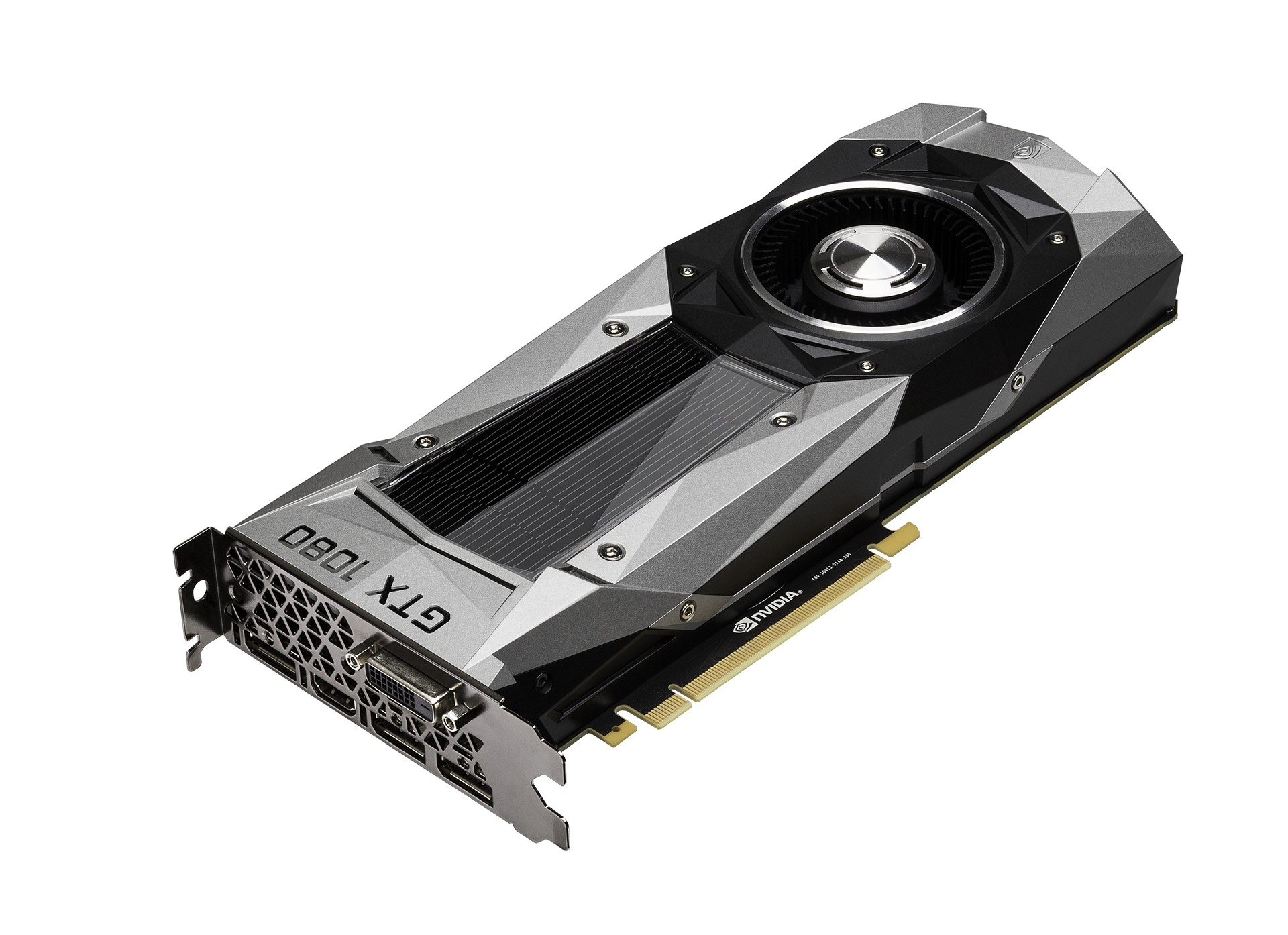
In a special event coinciding with Dreamhack in Austin, TX, Nvidia revealed to the world the name, specs, and design of their upcoming graphics cards. Much to the surprise of no one, the cards will be called the GTX 1080 and GTX 1070. But don't let the unsurprising nomenclature get you down, because the new cards are going to be insane. Let's just cut straight to the chase....
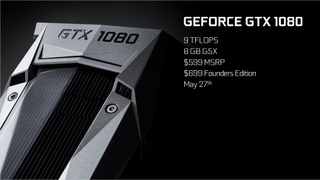
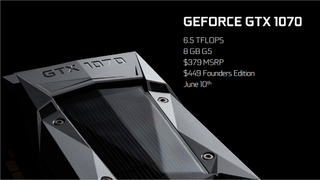
Those are the release dates and a few core specs, along with pricing. Nvidia didn't talk too much about the GTX 1070, but the GTX 1080 will feature 2560 CUDA cores that provide a total of 9 TFLOPS of performance. To put that into perspective, a GTX Titan X is only rated at 7 TFLOPS (with GPU Boost), while the 980 Ti is capable of around 6.5 TFLOPS—and the "lowly" GTX 980 does around 5.3 TFLOPS.
Update: The Founders Edition will be the designs shown above, sporting reference designs. They will be available at launch, while partner cards may deviate from the reference design and be priced above as well as below the level of the Founders Edition. The cards will be kept in production during the life of the GPU, will have reference clocks, and Nvidia will sell them directly. Partners can sell the card as well, and they can use their own designs, with or without overclocks.
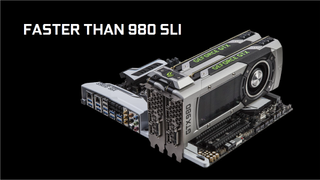
In raw performance, then, we're looking at a card that will be at least 30 percent faster than the GTX Titan X, and it'll be priced at $600. Even the GTX 1070, which will cost $380, is expected to exceed the performance of the Titan X in most workloads. Nvidia takes things a step further by claiming the GTX 1080 will beat two GTX 980 cards running in SLI. Ho. Lee. Crap. How was this done?
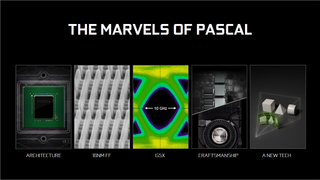
A lot of the improvements come thanks to 16nm FinFET, which is a huge jump in process technology compared to the previous generation's 28nm planar transistors. Nvidia says the GTX 1080 is more efficient than the GTX 980, which was their previous best card for efficiency. And while the GTX 1080 will use more power than the GTX 980, it's not significantly more—the 980 is a 165W TDP card, while the 1080 is a 180W TDP card. Oh, and it only requires a single 8-pin PEG connection.
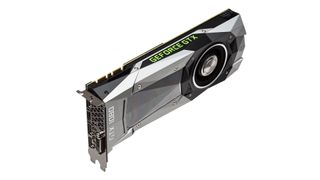
Other items of note are that both the GTX 1080 and 1070 will include 8GB of VRAM, but there's a difference between the two. First, though, we want to note that there are no memory segmentation shenanigans from the GTX 970 series this round; you get a full 8GB of VRAM. However, the GTX 1080 will use GDDR5X clocked at 10GHz, while the 1070 will use GDDR5—Nvidia didn't disclose the clock rate, but 7GHz is what the 970/980 use and that seems probable here. We don't know the bus width, but 256-bit would give the 1080 320GB/s, which seems likely.

Nvidia didn't specifically talk clock speeds, but we can get estimates of those from the TFLOPS, at least for the 1080 where we know it's 2560 cores. A core clock (with GPU Boost) of 1.75GHz gives the 9 TFLOPS result, and that's probably very likely. Why? Because Nvidia also disclosed some preliminary overclocked results for the GTX 1080 where they showed the core running at 2114MHz with the GDDR5X bumped to 11016MHz. Phew!
The biggest gaming news, reviews and hardware deals
Keep up to date with the most important stories and the best deals, as picked by the PC Gamer team.
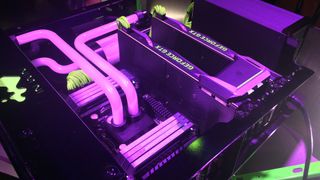
Nvidia had a whole bunch of systems on display after the main presentation, including the above swanky 1080 SLI setup. It has a new customized SLI connector, though it's probably just for show. The reference GTX 1080 also brings back the fully shielded backplate, similar to the reference GTX 980. If you recall that card, there was a portion of the backplate that you could remove to improve cooling in SLI configuration; it appears the back half of the 1080 backplate can be removed in a similar manner, as there are five small screws holding in that portion of the backplate.
The main cooler has also been updated, though here it mostly looks like a case of aesthetics rather than any major overhaul of the cooler. It has a vapor chamber to aid in cooling, and Nvidia has added some extra geometric designs to the cooling shroud. As with the past several generations of reference designs, the GTX 1080 reference model uses a blower fan instead of an open air cooler, which can be particularly useful for SLI configurations as well as compact ITX builds.

Nvidia boldly proclaims the GTX 1080 as the "New King" of gaming, and based on the information presented there's little reason to doubt that's the case. With substantially improved performance and efficiency relative to even the best Maxwell GPUs, this is a beast of a card. But what's interesting is that the Pascal GP104 GPU "only" has 7.6 billion transistors, which is a far cry from the 15.3 billion used in the larger Pascal GP100. This is a much smaller chip, and it doesn't need to worry about FP64 performance, but it does leave the door open for Nvidia to potentially do a consumer-focused "big Pascal" instead of repurposing GP100—I wouldn't be surprised to see a GP102 with 50 percent more FP32 cores come out next year, though a "Titan P" based off GP100 is also a possibility.
So what's the bad news? We don't have any 1080 or 1070 cards for testing and we can't show specific benchmark results just yet. Expect full performance details and a deeper analysis of the Pascal architecture and features before the official launch dates. As for AMD, all indications are their Polaris 10 and Polaris 11 will target the mainstream, leaving Fiji as the high-end architecture until Vega arrives in 2017; that's a long time, but we'll withhold judgement for now. But if you're thinking about upgrading, early June is looking like a prime time to take the Pascal plunge. Expect us to update our list of the best GPUs shortly after.
Update: We've now added some discussion of the additional features and software Nvidia announced last night in a separate article.
Jarred's love of computers dates back to the dark ages when his dad brought home a DOS 2.3 PC and he left his C-64 behind. He eventually built his first custom PC in 1990 with a 286 12MHz, only to discover it was already woefully outdated when Wing Commander was released a few months later. He holds a BS in Computer Science from Brigham Young University and has been working as a tech journalist since 2004, writing for AnandTech, Maximum PC, and PC Gamer. From the first S3 Virge '3D decelerators' to today's GPUs, Jarred keeps up with all the latest graphics trends and is the one to ask about game performance.
Most Popular

